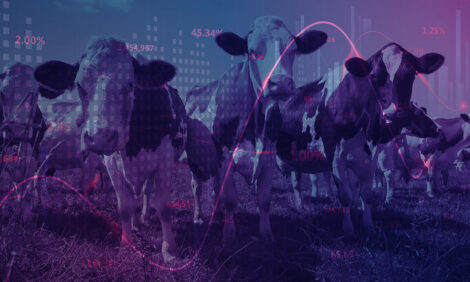



USDA: Effects Of Rising CO<sub>2</sub> On Rangelands
Rising carbon dioxide (CO2) levels can reverse the drying effects of predicted higher temperatures on semi-arid rangelands, according to a study published in the scientific journal Nature by a team of US Department of Agriculture (USDA) and university scientists.

Warmer temperatures increase water loss to the atmosphere, leading to drier soils. In contrast, higher CO2 levels cause leaf stomatal pores to partly close, lessening the amount of water vapour that escapes and the amount of water plants draw from soil. This new study finds that CO2 does more to counterbalance warming-induced water loss than previously expected. In fact, simulations of levels of warming and CO2 predicted for later this century demonstrated no net change in soil water, and actually increased levels of plant growth for warm-season grasses.
"By combining higher temperatures with elevated CO2 levels in an experiment on actual rangeland, these researchers are developing the scientific knowledge base to help prepare managers of the world's rangelands for what is likely to happen as climate changes in the future," said Edward B. Knipling, administrator of the Agricultural Research Service (ARS), USDA's principal intramural scientific research agency.
The results cover the first four years of the eight-year Prairie Heating and CO2 Enrichment (PHACE) experiment on native northern mixed grass rangeland. The study is being conducted by the ARS Rangeland Resources Research Unit (RRRU) at the High Plains Grasslands Research Station near Cheyenne, Wyoming.
ARS plant physiologist Jack Morgan leads the study, which uses both CO2 pipelines and thermal infrared heaters to simulate global warming conditions predicted for the end of the century: 600 parts per million (ppm) of CO2—compared to today's average 390 ppm—and day/night temperatures raised by 3 and 5 degrees Fahrenheit, respectively.

Based on these findings, warmer temperatures would likely play a role in changing the relative success of various grass types. "Only the warm-season grasses had their growth boosted higher by CO2 and warmer temperatures," Mr Morgan said. "If this leads to a competitive advantage for warm-season grasses, it may increase the challenges faced by ranchers who desire cool-season grasses for early-season forage."
Elise Pendall and David Williams at the University of Wyoming at Laramie and Matthew Wallenstein at Colorado State University at Fort Collins also are participating in the study, which will be completed in 2013. Retired ARS soil scientist Bruce Kimball, designer of the infrared heater system, is helping conduct the study. Mr Kimball serves as a research collaborator at the ARS US Arid-Land Agricultural Research Center in Maricopa, Ariz.
Grass-dominated, dry rangelands account for approximately a third of the Earth's land surface, providing most of the forage eaten by livestock. This research, the first of its kind on this scale for rangelands, supports the USDA priority of helping farmers and ranchers throughout the United States and the rest of the world best adapt production practices to variable climate patterns.
Mr Morgan said more research is needed to determine how the water-savings effect applies over the long run and in other types of semi-arid rangelands as well as to croplands in semi-arid areas. "It is important to understand that CO2 only offset the direct effects of warming on soil water in this experiment, and that it is unlikely to offset more severe drought due to combined warming and reduced precipitation projected for many regions of the world," he said.
In addition to ARS funding, the research is supported by grants from the National Science Foundation, the US Department of Energy, and USDA's National Institute of Food and Agriculture.


